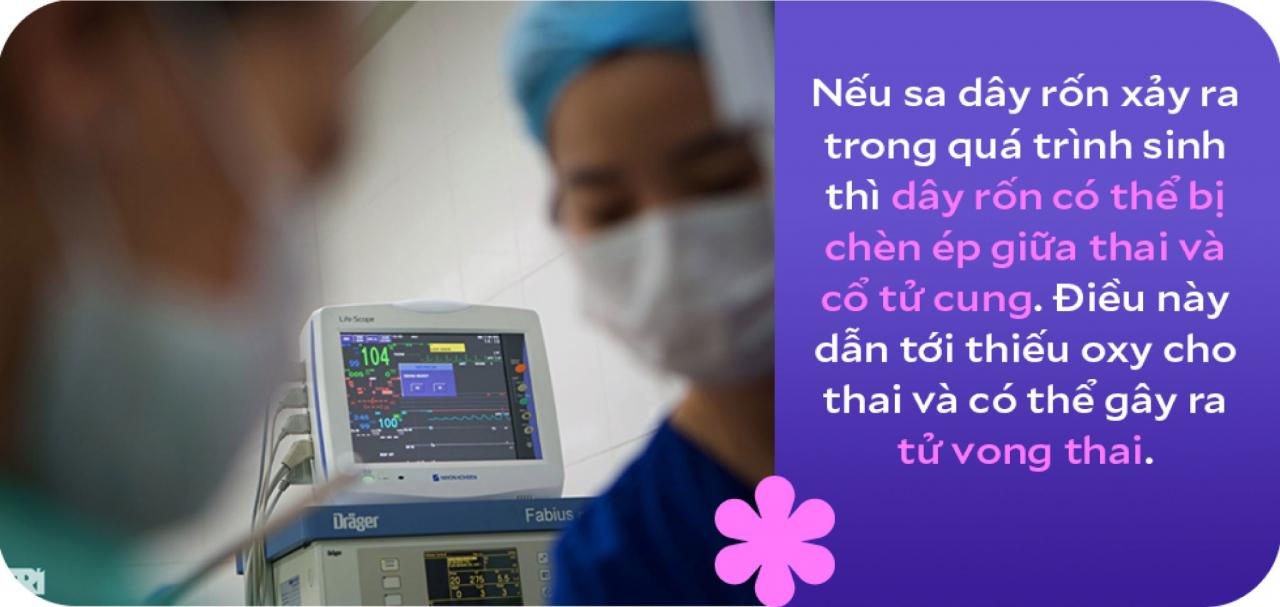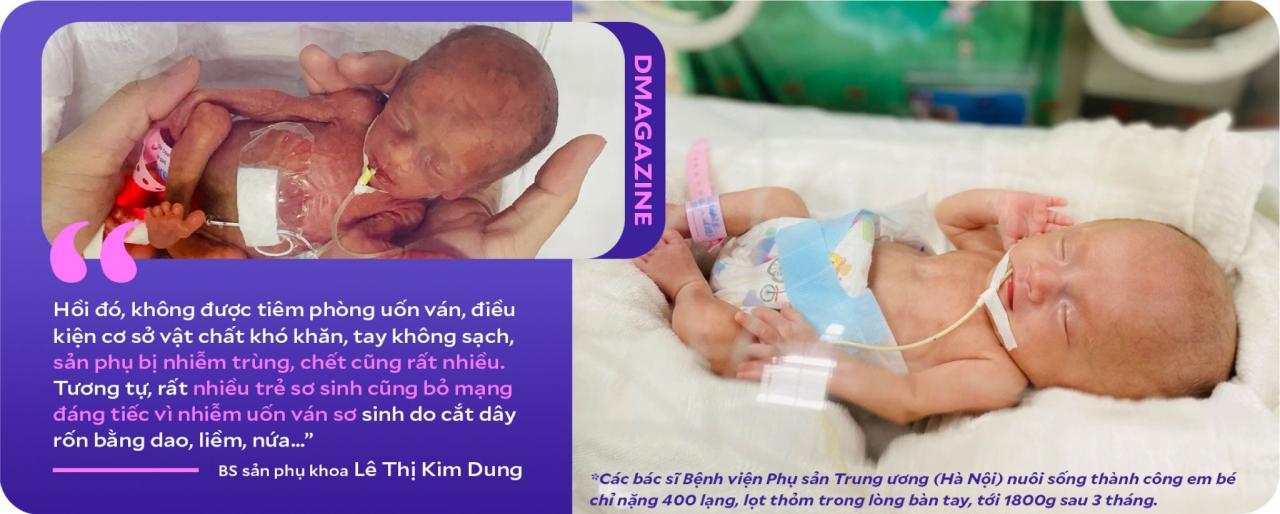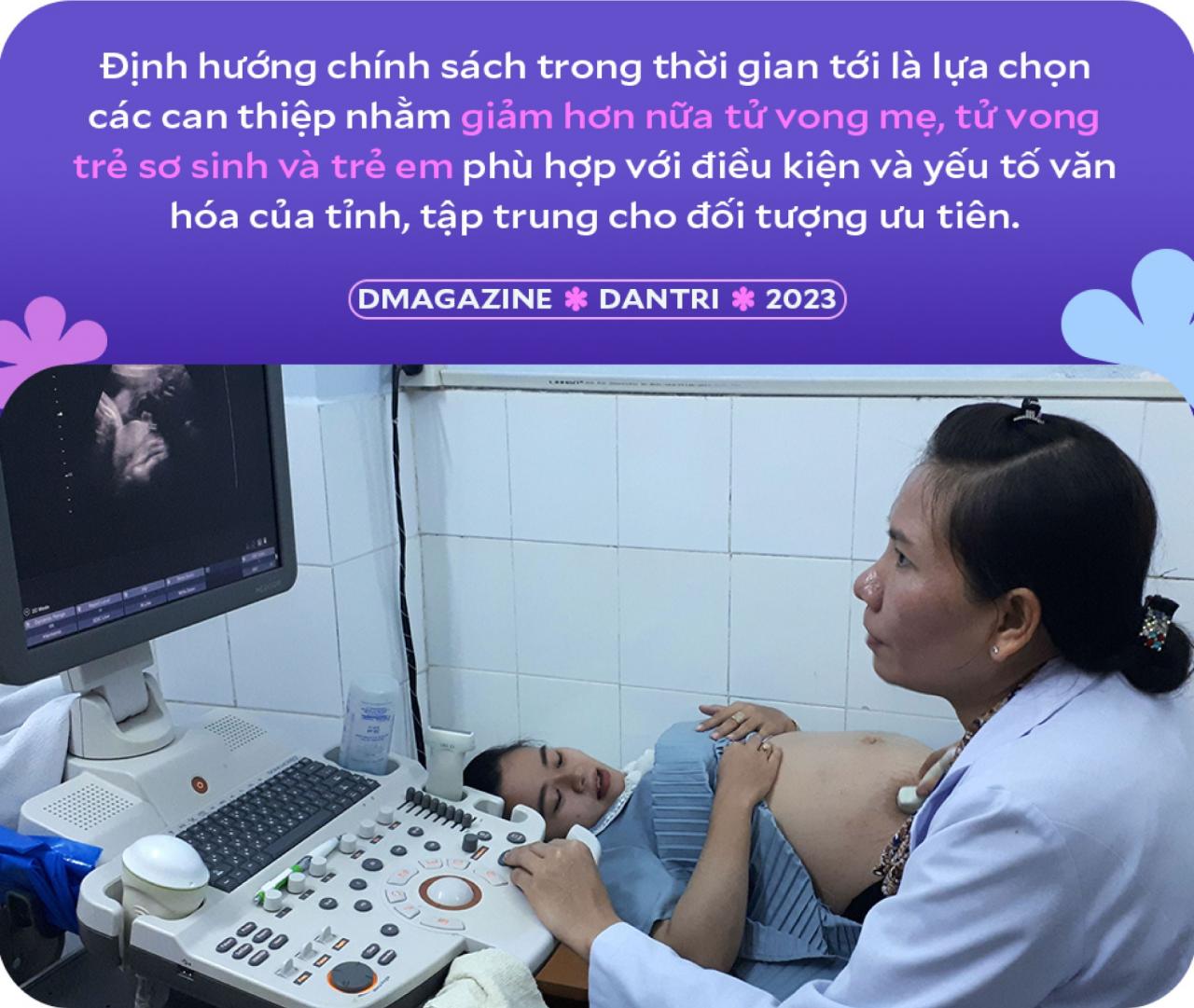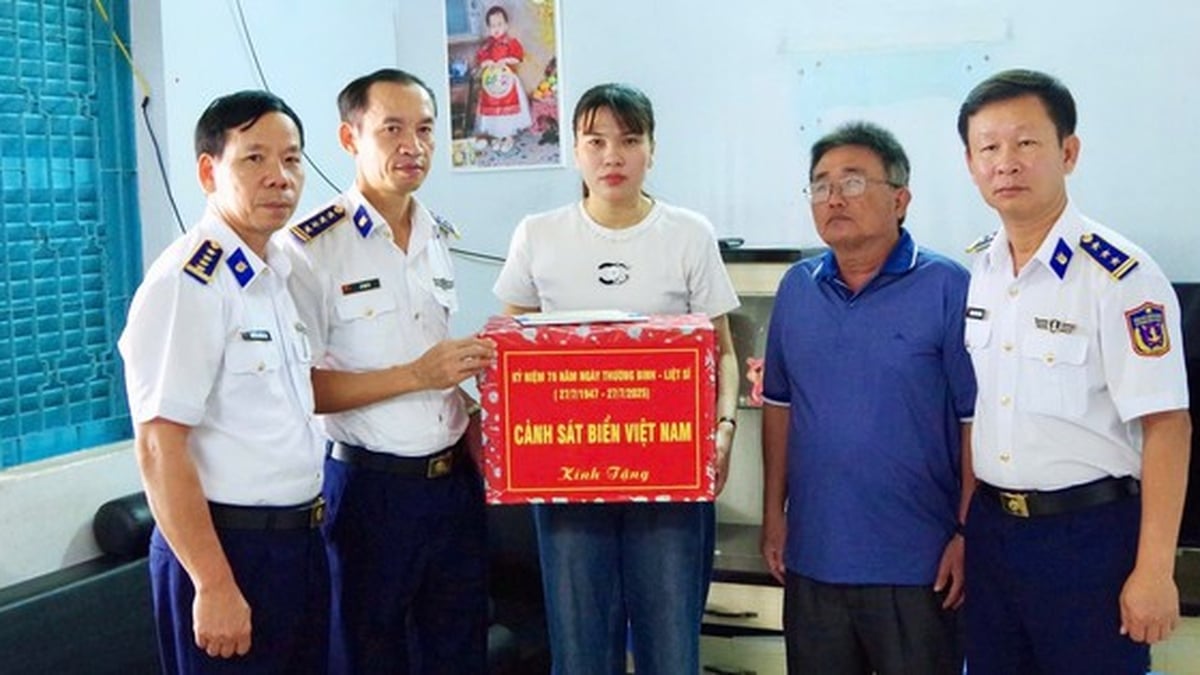The old saying goes "pregnant woman is at the grave's door" to describe the dangers that women may encounter during pregnancy and childbirth. For women who give birth to many children, the level of danger does not decrease but increases many times over.
In particular, the story of pregnancy and childbirth of women in mountainous districts with difficult travel is even more dangerous. The case of a 29-year-old Mong woman in Muong Do commune, Phu Yen district, Son La province, pregnant for the 5th time is an example.
On May 13, while attending a conference in the district, the midwife of Ban Thi Hoa village received a call to deliver a baby. She immediately rushed to the mother's house. At first, she thought it was just a normal birth like any other, but when she examined the mother, she realized something was wrong.

"There was something hanging from the cervix, so I persuaded the family to take the mother to a higher level facility. At first, they did not agree because they only called the midwife's office. After a while of convincing them that this condition was dangerous, they agreed to take the mother," Hoa recounted.
However, the journey from home to the medical station was not easy. The distance was 13km, but 6km was dirt and rocky - on this stretch, the husband had to carry his wife horizontally on the motorbike, while his wife screamed in pain.
The group reached the concrete road before a car arrived to take the mother to the medical station. There, a midwife informed the mother that the umbilical cord had prolapsed and that an ambulance had to be called to take her to the hospital immediately.
During the nearly 30km journey by car from the medical station to Phu Yen Hospital, Hoa and the midwife took turns holding the baby’s head to prevent it from coming out. Meanwhile, the fetal heart rate dropped rapidly from 130 to only 82 when the ambulance arrived.
"Even though my arms were tired and numb from holding the same position for so long, and I was worried about the baby's heart rate dropping rapidly, the two sisters still had to stay calm and always encourage the mother. Because of the pain, the mother screamed and cried until her whole body turned purple," Hoa recalled.
Upon arriving at the hospital, the mother was immediately transferred to the emergency operating room. Fortunately, the baby was eventually saved. According to doctors, umbilical cord prolapse is an obstetric emergency that requires immediate delivery.
Umbilical cord prolapse is uncommon, but it is a life-or-death emergency for the fetus. If cord prolapse occurs during labor, the cord may become compressed between the fetus and the cervix. This leads to a lack of oxygen to the fetus and can cause fetal death.


If that birth had happened a few decades ago, it is likely that the baby would not have been so lucky to be born. As a retired doctor who worked for many years at the Hanoi Obstetrics and Gynecology Hospital, obstetrician and gynecologist Le Thi Kim Dung said that she herself witnessed a dramatic change in reducing maternal and child mortality rates.
Dr. Dung's grandmother was also an obstetrician. Therefore, she witnessed many births that would be unimaginable to people of today's generation.
"At that time, the whole country had only a few cesarean centers, and at the provincial and district levels, there were no cesarean sections, only natural births. My grandmother only knew how to give birth vaginally. In the past, there was no ultrasound, examination was only done by hand, in cases of difficult births, the only thing we could do was try to save the mother," said Dr. Dung.
According to doctors at that time, cases of transverse and breech babies were all delivered naturally, with the baby being pulled out from the vagina, without a cesarean section. There were many scenes that, when recounted to her now, still made her feel "limps falling off". The breech baby had to be hooked by the medical staff with their hands, pulling the baby out, the baby's head shaking at the mother's "doorway".
She once witnessed her grandmother handling a postpartum hemorrhage, using a black pillow to stuff inside to stop the bleeding. Miraculously, the woman survived.

Even when she returned to work at Hanoi Obstetrics Hospital, the issue of postpartum resuscitation was still very new at that time. She was determined to go to Bach Mai Hospital to study resuscitation because she knew that after giving birth or having a cesarean section, the mother was very weak and risks were always lurking.
To prevent mothers from dying suddenly and senselessly, resuscitation and post-partum monitoring play a very important role.
"One of the terrible complications in obstetrics is postpartum hemorrhage. But now we see that thanks to better resuscitation and better diagnosis, this condition has decreased a lot. Nowadays, it is rare for people to die from ectopic pregnancy, but in the past, it was very common," Dr. Dung shared.

According to the Department of Maternal and Child Health (Ministry of Health), Vietnam has achieved many successes in reducing maternal and child mortality. We have been recognized by the international community as a bright spot in implementing the Millennium Development Goals on maternal and child health.
The maternal mortality rate in our country has decreased sharply in the past 3 decades, from 140 cases/100,000 live births in 1976 to 46 cases/100,000 live births in 2019. If this trend continues to decrease, Vietnam will certainly achieve its sustainable development goal of less than 45 cases by 2030.
The rate of women who receive 4 or more prenatal check-ups is over 80%. The rate of women who receive medical assistance during childbirth is maintained at 95-97%. The rate of postnatal care in the first 7 days is about 80%.
Similarly, the infant mortality rate (IMR) and the under-five mortality rate (U5MR) both decreased sharply. In 2020, the IMR was 13.9 deaths/1,000 live births, and the U5MR was 22.3 deaths/1,000 live births, down nearly three times compared to 1979. According to the Statistical Yearbook, these figures in 2021 were 13.6 and 20.5, respectively.
Speaking at the conference held in March in Hanoi, Deputy Minister of Health Tran Van Thuan also emphasized that in recent times, Vietnam has achieved many encouraging achievements in maternal and child health care; the maternal mortality rate has decreased sharply. However, our country is still facing challenges in reducing disparities between regions and ethnic groups.

Dr. Tran Dang Khoa, Deputy Director of the Department of Maternal and Child Health (Ministry of Health) also said that the maternal and infant mortality rate in Vietnam has decreased significantly. However, compared to the world average, especially compared to developed countries, this rate is still high, especially in remote areas and ethnic minority areas.
Maternal mortality in ethnic minority areas is three times higher than in urban areas. This rate among the Mong is seven to eight times higher than among the Kinh and Tay ethnic groups.
The infant mortality rate in rural areas remains twice as high as in urban areas, and the gap in infant mortality between ethnic minorities and the Kinh majority is widening.
"Because of the distance from medical facilities, many mothers in disadvantaged areas have to give birth at home and do not receive timely and proper medical care, leading to unfortunate consequences. In addition, in remote areas, there is a shortage of medical staff, especially specialists in obstetrics, pediatrics, and anesthesia and resuscitation," Dr. Khoa analyzed.
In fact, 30% of general practitioners provide obstetric and pediatric care at the district level. In addition, capacity for obstetric and neonatal emergencies (screening, danger sign detection, referral, diagnosis, prognosis and treatment) is limited in disadvantaged areas.


Content: Nam Phuong
Design: Patrick Nguyen
Dantri.com.vn



































































































Comment (0)